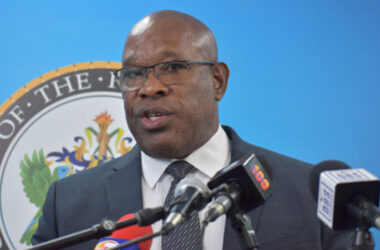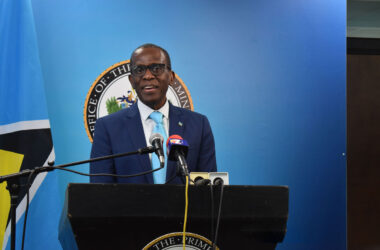WASCO Reopens Tender Process.
![Image: WASCO's Managing Director, Vincent Hippolyte. [Photo: Stan Bishop]](https://www.thevoiceslu.com/wp-content/uploads/2015/06/wasco.jpg)
WASCO’s Managing Director, Vincent Hippolyte, told the media this week that the negotiations yielded “no meaningful result” and that another tendering process should begin by mid-May with the expectation that WASCO would receive, evaluate and possibly award a contract or enter negotiations by August. He said the CDB has already been notified about the latest development.
Hippolyte said two pre-qualified bidders were selected from six submissions received last December and were evaluated between December and January. A decision was taken in February to begin negotiations with one bidder after the other withdrew its interest, he said. Those negotiations eventually ran from mid-March to mid-April.
“Throughout the process, we were trying to make sure that the negotiations would have resulted in a bid that would be considered acceptable in keeping with the estimates that we had from our consultant (and) our own understanding of the works to be done,” Hippolyte said.
Hippolyte said that should an award be made by the presumptive August timeline, the contractor would then be given a timeframe within which essential logistics are mobilized, including the importing of and setting up the requisite equipment on-site. Following the completion of the project, he said, the equipment would become the property of WASCO.
Following repeated weather systems that battered the island over the past few years, the John Compton Dam’s holding capacity has been drastically reduced due to heavy silting. The effects of El Niño have also worsened the water supply capacity at the dam that services the north of the island.
Hippolyte said bids were received and evaluated as per the guidelines prescribed by the Caribbean Development Bank (CDB), which is financing the rehabilitation of the John Compton Dam. The servicing of that loan from the CDB will be done via the dredging fund established some time ago following a 10.43% dredging fee approved by the National Water and Sewerage Commission (NWSC) in April 2013. By April 30 last year, that fund was estimated at $8, 433, 235. 19.
Hippolyte said that by virtue of CDB financing the project, along with the European Investment Bank and the Inter-American Development Bank, applications for tenders will extend to interested parties from those member countries affiliated with those institutions qualified to make a bid. This means that the tendering process extends to any local, regional and international party.
Qualifying companies must also be able to de-silt the dam, thereby allowing WASCO greater access to the reservoir’s water supply, especially from the dam’s second column. Further, the qualifying companies will be responsible for setting up a safe sediment disposal area.
Describing the de-silting of the dam as “a very complicated process”, Hippolyte said WASCO’s main objective is to get the task at hand done right, thus averting any catastrophic consequences. As such, he said, careful steps are being taken to ensure that the process is as seamless as possible.
“The duty is really on WASCO. It’s either that WASCO understands the job that it has to do to get it right in the public’s interest or WASCO fails to do the job and creates a huge catastrophe for all of us. The job is a huge one and so we have to be responsible,” Hippolyte explained.
He added: “We have to get the best plan to get this project completed sustainably. Anything short of that is going to be catastrophic.”


![Image: WASCO's Managing Director, Vincent Hippolyte. [Photo: Stan Bishop]](https://thevoiceslu.com/wp-content/uploads/2015/06/wasco-mid.jpg)













